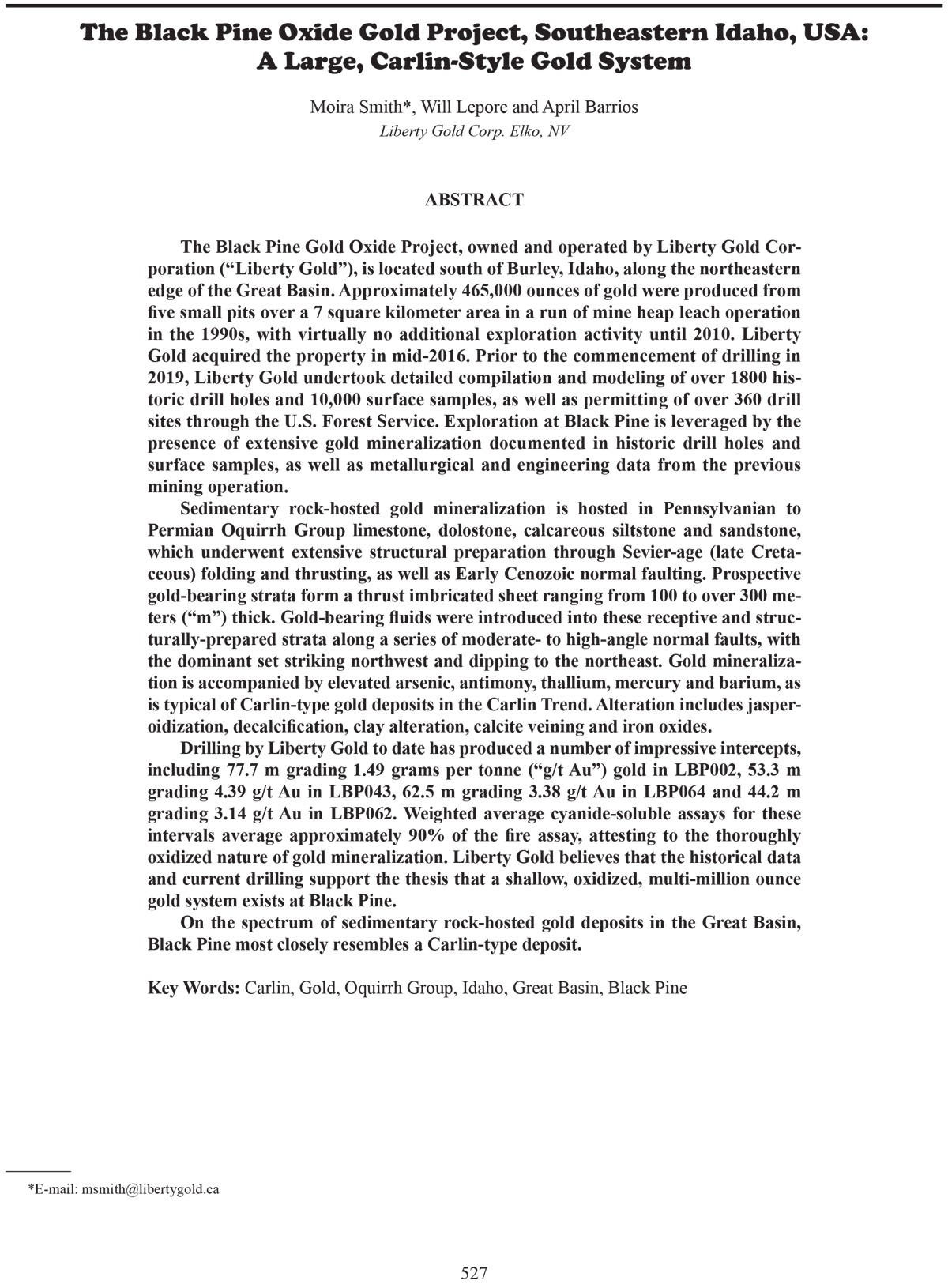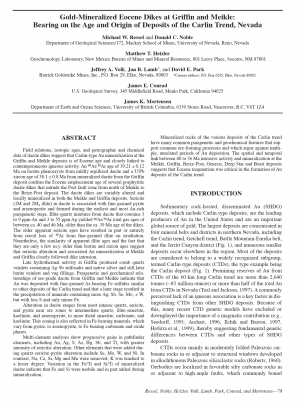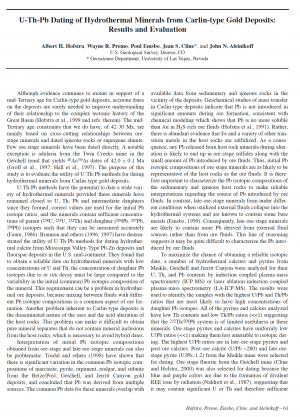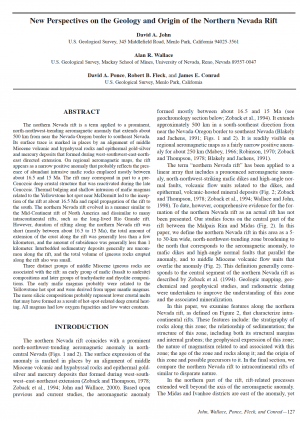Description
The Black Pine Gold Oxide Project, owned and operated by Liberty Gold Corporation (“Liberty Gold”), is located south of Burley, Idaho, along the northeastern
edge of the Great Basin. Approximately 465,000 ounces of gold were produced from
five small pits over a 7 square kilometer area in a run of mine heap leach operation
in the 1990s, with virtually no additional exploration activity until 2010. Liberty
Gold acquired the property in mid-2016. Prior to the commencement of drilling in
2019, Liberty Gold undertook detailed compilation and modeling of over 1800 historic drill holes and 10,000 surface samples, as well as permitting of over 360 drill
sites through the U.S. Forest Service. Exploration at Black Pine is leveraged by the
presence of extensive gold mineralization documented in historic drill holes and
surface samples, as well as metallurgical and engineering data from the previous
mining operation.
Sedimentary rock-hosted gold mineralization is hosted in Pennsylvanian to
Permian Oquirrh Group limestone, dolostone, calcareous siltstone and sandstone,
which underwent extensive structural preparation through Sevier-age (late Cretaceous) folding and thrusting, as well as Early Cenozoic normal faulting. Prospective
gold-bearing strata form a thrust imbricated sheet ranging from 100 to over 300 meters (“m”) thick. Gold-bearing fluids were introduced into these receptive and structurally-prepared strata along a series of moderate- to high-angle normal faults, with
the dominant set striking northwest and dipping to the northeast. Gold mineralization is accompanied by elevated arsenic, antimony, thallium, mercury and barium, as
is typical of Carlin-type gold deposits in the Carlin Trend. Alteration includes jasperoidization, decalcification, clay alteration, calcite veining and iron oxides.
Drilling by Liberty Gold to date has produced a number of impressive intercepts,
including 77.7 m grading 1.49 grams per tonne (“g/t Au”) gold in LBP002, 53.3 m
grading 4.39 g/t Au in LBP043, 62.5 m grading 3.38 g/t Au in LBP064 and 44.2 m
grading 3.14 g/t Au in LBP062. Weighted average cyanide-soluble assays for these
intervals average approximately 90% of the fire assay, attesting to the thoroughly
oxidized nature of gold mineralization. Liberty Gold believes that the historical data
and current drilling support the thesis that a shallow, oxidized, multi-million ounce
gold system exists at Black Pine.
On the spectrum of sedimentary rock-hosted gold deposits in the Great Basin,
Black Pine most closely resembles a Carlin-type deposit.





